AI-Enabled Energy Policy for a Sustainable Future
Abstract
1. Introduction
2. Energy Transition and the Decarbonization Scenario at a Glance
3. Policy Development and the Decision-Making Process
- Conceptualization Phase: This phase forms clear and abstract ideas of the concept or phenomenon, exploring further analysis.
- Assessment Phase: This phase evaluates the overall framework using relevant data to align with system parameters.
- Excerption Phase: Handles identification and selection of obvious or decisive solutions to remove from further evaluation in the cycle.
- Ranking Phase: This phase involves arranging the different decision options in order of priority to assist in the weighting process.
- Consensus Phase: Reaching an agreement among previous phases to determine key performance indicators and assign weights.
- Formulation Phase: Synthesizing the process, creating a structured framework from the raw inputs/parameters for the given process.
4. Energy Policy Scenarios
5. How Will AI Shape Future Energy Policies?
- 1.
- Data Collection:The first step in developing a data-driven model for energy facilities involves identifying the necessary datasets for training and testing the model. This may involve developing a plan for data collection, which can include utilizing publicly available datasets, partnering with other organizations to collect data, or creating a synthetic dataset. Once the dataset has been identified, it must be collected and cleaned to ensure accuracy, representativeness, and quality.
- 2.
- Data Exploration:After data collection, the next step is to analyze the data to identify patterns and relationships between the input variables and output. This involves performing any necessary data pre-processing, such as feature scaling or normalization.
- 3.
- Model Selection and Training:Once the data is explored, a suitable data-driven model, such as an artificial neural network, can be selected to be trained on the collected data.
- 4.
- Model Evaluation:After the model is trained, its performance requires a separate dataset. If necessary, the model can be fine-tuned to improve its performance.
- 5.
- Model Application:The next step is to use the trained model to make predictions and analyze the variables under different scenarios. Based on the model’s predictions, recommendations for optimization can be developed.
- 6.
- Reporting:Finally, the study’s results are summarized in a report that includes the methods used, results obtained, and conclusions drawn. Additionally, a presentation can be prepared to highlight the essential findings and recommendations to relevant stakeholders. Following these steps, a data-driven model can be developed and utilized to optimize energy facilities and improve energy efficiency.
6. AI-Driven Policy Development Building Blocks
7. AI and Machine Learning Methods for Integration in Energy Systems
- Classification: Naive Bayes, Support Vector Machines (SVM), decision trees, neural networks, induction rules, k-nearest neighbors.
- Regression: Linear and logistic regression, polynomial regression, CART (Classification and Regression Trees);
- Time series forecasting: Autoregression (AR), Mean Absolute Percentage Error (MAPE), Moving Average (MA), exponential smoothing, ARIMA (Auto Regressive Integrated Moving Average).
- Association analysis: A priori algorithm, ECLAT (Equivalence Class Transformation) algorithm, FP-growth algorithm;
- Clustering: k-Means, Density-Based Spatial Clustering of Applications with Noise (DBSCAN), hierarchical clustering, XRF Spectral-Based Sorting (SBS);
- Anomaly detection: Isolation forest, distance-based, density-based, LOF (Local Outlier Facto), one-class SVM, Z-score;
- Feature selection: Recursive feature elimination, lasso regression, random forest;
- Ensemble methods: Random forest, gradient boosting, AdaBoost.
- Deep and transfer learning: Convolutional Neural Networks (CNNs), Recurrent Neural Networks (RNNs), Generative Adversarial Networks (GANs);
- Text mining: Natural Language Processing (NLP), Term Frequency–Inverse Document Frequency (TF-IDF), sentiment analysis;
- Computer vision: Image classification, object detection, segmentation;
- Natural language generation: GPT-3 (Generative Pretrained Transformer 3), OpenAI, ELMo (Embeddings from Language Models), OpenAI Gym;
- Dimensionality reduction: Principal Component Analysis (PCA), Singular Value Decomposition (SVD), Linear Discriminant Analysis (LDA);
- Reinforcement learning: Q-Learning, SARSA (State–Action–Reward–State–Action), Deep Q-Networks (DQN);
- Generative methods: Variational Autoencoders (VAE), Generative Adversarial Networks (GAN), Boltzmann machines;
- Network and graph analysis: Centrality measures, community detection, link prediction, PageRank;
- Recommender systems: Matrix factorization, neighborhood-based collaborative filtering, deep-learning-based recommender systems.
8. The Proposed Framework
- Timeframe of implementation:
- Short-term: The energy policy tool or technique is expected to be implemented for less than one year and obtain results within this period. Short-term solutions have an implementation period of less than one year. They often address immediate or urgent energy-related issues, e.g., emergency power generation during natural disasters, load-shedding programs to reduce peak demand, etc.
- Medium-term: Medium-term solutions have an implementation period between one and five years. These solutions usually address intermediate energy-related issues and lay the foundation for long-term solutions, e.g., energy efficiency programs for buildings and appliances.
- Long-term: Long-term solutions are implemented for periods over five years. These plans address long-term energy-related issues, e.g., transitioning to a low-carbon energy system, developing large-scale renewable energy projects, deploying carbon capture and storage technologies, etc.
- Level of interaction with other sectors:
- Standalone: Implemention by a single sector without potentially impacting other sectors. Projects such as energy efficiency programs for buildings and appliances, development of small-scale renewable energy projects, etc.
- Cross-sectoral: A multi-task or multi-beneficiaries project design to be implemented in collaboration with other sectors. These solutions are implemented considering their impact on different industries and aim to achieve multiple objectives. Cross-sectoral solutions include integrating electric vehicles into the transportation sector, using energy storage to enhance the reliability of the electric power grid, etc.
- Multi-sectoral: Involves multiple sectors with various stakeholders impacted differently and interchangeably. These solutions aim to achieve multiple objectives and are implemented in collaboration with different sectors, e.g., integrating renewable energy into the industrial sector, deploying smart grid technologies to enhance the reliability of the electric power grid, etc.
- Type of implementation:
- Government-led: Primarily implemented by government agencies or entities through regulations, subsidies, or other forms of government support, e.g., building energy codes and standards, renewable energy portfolio standards, etc.
- Industry-led: Governing by private industry or businesses using market-based mechanisms or voluntary agreements between industry and government, e. g., feed-in tariffs, energy efficiency programs for buildings and appliances, etc.
- Community-led: Directed by communities or local organizations conducting community-based initiatives, e.g., energy cooperatives or community-based renewable energy projects, etc.
- Public–private partnership: Collaboration of public and private sectors and associations between government agencies, private industry, and local organizations, e.g., development of large-scale renewable energy projects, deployment of smart grid technologies, etc.
- Level of Innovativeness:
- Incremental: Existing infrastructures or setups show a gradual improvement over existing solutions. These solutions are typically low-risk and have a relatively low level of uncertainty.
- Radical: Emerging technologies demonstrate a significant departure from existing solutions. These solutions have a higher level of risk and uncertainty than incremental solutions.
- Disruptive: This class is based on new or emerging technologies or practices that fundamentally change the energy system and disrupt existing markets and technologies. These solutions can potentially create new opportunities and transform the energy system but also come with high risk and uncertainty. For instance, disruptive solutions include deploying blockchain technology for energy transactions and integrating artificial intelligence for energy system management.
- Level of Maturity:
- Early stage: At the early stages of development or implementation and having high uncertainty.
- Mid-stage: At the middle stages of growth and after examining the solutions; demonstrates some level of validation but is not yet fully mature.
- Mature stage: At the fully developed stage and has been implemented and validated in multiple settings. These solutions have a low level of uncertainty and have been proven effective.
- Level of complexity:
- Simple: Easy to understand and implement with a low level of complexity, fewer components, easy to replicate, e.g., energy-efficient lighting systems, public awareness campaigns, etc.
- Moderate: A moderate level of complexity with more components that may require more resources to implement and maintain, e.g., energy efficiency programs for buildings and appliances, development of small-scale renewable energy projects, etc.
- Complex: Highly complex with many components and requires significant resources to implement and maintain, e.g., the development of large-scale renewable energy projects, the deployment of smart grid technologies, etc.
- Level of scalability:
- Local: Implemented at a local level within a specific city or community, tailored particular needs of the local area and having a limited impact in the broader region (country), e.g., community-based renewable energy projects, energy efficiency programs for local buildings and appliances, etc.
- Regional: Designed for the regional level for a specific state or province with a more significant impact on a region, e.g., the development of small-scale renewable energy projects, the deployment of smart grid technologies in a specific area, etc.
- National: Deployed on a national scale with a significant impact on the energy system and put into action through national policies and regulations, e.g., renewable energy portfolio standards, energy conservation standards for appliances and buildings, etc.
- International: Draws in a big picture at the international level across multiple countries, having a global impact pursued through international agreements and frameworks, e.g., the deployment of carbon capture and storage technologies, international cooperation on energy and climate policy, etc.
- Level of Flexibility:
- Rigid: This applies to an inflexible system with predefined rules and parameters that cannot be adjusted quickly and are less adaptable to changing circumstances.
- Adaptable: Refers to a flexible system that can be adjusted to changing circumstances with more adaptability to the evolving circumstances and customizability to suit specific needs.
- Resilient: A system to withstand and recover from disturbances with a robust condition and withstand disruptions to the energy system.
- Level of Regulation:
- Regulated: Subject to government regulations and oversight, implemented by government mandates, e.g., building energy codes and standards, that are closely monitored to ensure compliance.
- Voluntary: Refers to a voluntary agreement between industry and government that is implemented based on mutual agreement, e.g., energy efficiency programs for buildings and appliances, and relies on self-regulation and market-based mechanisms.
- Hybrid: Demonstrates a combination of regulated and voluntary measures, using a combination of government mandates and incentives, voluntary agreements, and market-based mechanisms.
- Level of Automation:
- Manual: Operating manually requires human intervention for operation with less efficiency and may have higher costs.
- Semi-automatic: Possesses some level of automation but still requires human intervention for operation; more efficient than manual and may have lower costs.
- Automatic: Automation with minimal human intervention is the most efficient and cost-effective method due to high production and low error rates.
9. Conclusions and the Way Forward
Author Contributions
Funding
Institutional Review Board Statement
Informed Consent Statement
Data Availability Statement
Acknowledgments
Conflicts of Interest
References
- Hart, S.L. An Integrative Framework for Strategy-Making Processes. Acad. Manag. Rev. 1992, 17, 327–351. [Google Scholar] [CrossRef]
- Whittington, R.; Cailluet, L.; Yakis-Douglas, B. Opening Strategy: Evolution of a Precarious Profession. Br. J. Manag. 2011, 22, 531–544. [Google Scholar] [CrossRef]
- Rumelt, R.P. Good Strategy/Bad Strategy: The Difference and Why It Matters. Strateg. Dir. 2012, 28, 336. [Google Scholar] [CrossRef]
- Danish, M.S.S.; Elsayed, M.E.L.; Ahmadi, M.; Senjyu, T.; Karimy, H.; Zaheb, H. A Strategic-Integrated Approach for Sustainable Energy Deployment. Energy Rep. 2020, 6, 40–44. [Google Scholar] [CrossRef]
- Sokołowski, M.M.; Heffron, R.J. Defining and Conceptualising Energy Policy Failure: The When, Where, Why, and How. Energy Policy 2022, 161, 112745. [Google Scholar] [CrossRef]
- Rizos, V.; Bryhn, J. Implementation of Circular Economy Approaches in the Electrical and Electronic Equipment (EEE) Sector: Barriers, Enablers and Policy Insights. J. Clean. Prod. 2022, 338, 130617. [Google Scholar] [CrossRef]
- Sitepu, M.H.; McKay, A.; Holt, R.J. An Approach for the Formulation of Sustainable Replanting Policies in the Indonesian Natural Rubber Industry. J. Clean. Prod. 2019, 241, 118357. [Google Scholar] [CrossRef]
- Danish, M.S.S.; Ibrahimi, A.M.; Ahmadi, M.; Shams, S.; Fedayi, H.; Senjyu, T.S. Energy Strategy and Policy Development Process. In Eco-Friendly and Agile Energy Strategies and Policy Development; Practice, Progress, and Proficiency in Sustainability (PPPS); IGI Global: Hershey, PA, USA, 2022; pp. 1–27. ISBN 978-1-79989-502-2. [Google Scholar]
- Li, J.; Xu, G. Circular Economy towards Zero Waste and Decarbonization. Circ. Econ. 2022, 1, 100002. [Google Scholar] [CrossRef]
- Ko, Y.-C.; Fujita, H.; Li, T. An Evidential Analysis of Altman Z-Score for Financial Predictions: Case Study on Solar Energy Companies. Appl. Soft Comput. 2017, 52, 748–759. [Google Scholar] [CrossRef]
- Safarzadeh, S.; Rasti-Barzoki, M. A Game Theoretic Approach for Pricing Policies in a Duopolistic Supply Chain Considering Energy Productivity, Industrial Rebound Effect, and Government Policies. Energy 2019, 167, 92–105. [Google Scholar] [CrossRef]
- Sotiriou, C.; Zachariadis, T. A Multi-Objective Optimisation Approach to Explore Decarbonisation Pathways in a Dynamic Policy Context. J. Clean. Prod. 2021, 319, 128623. [Google Scholar] [CrossRef]
- Entezari, A.; Aslani, A.; Zahedi, R.; Noorollahi, Y. Artificial Intelligence and Machine Learning in Energy Systems: A Bibliographic Perspective. Energy Strategy Rev. 2023, 45, 101017. [Google Scholar] [CrossRef]
- Chawla, Y.; Shimpo, F.; Sokołowski, M.M. Artificial Intelligence and Information Management in the Energy Transition of India: Lessons from the Global IT Heart. Digit. Policy Regul. Gov. 2022, 24, 17–29. [Google Scholar] [CrossRef]
- Zhu, X.; Liao, B.; Yang, S. An Optimal Incentive Policy for Residential Prosumers in Chinese Distributed Photovoltaic Market: A Stackelberg Game Approach. J. Clean. Prod. 2021, 308, 127325. [Google Scholar] [CrossRef]
- Zhang, M.; Tang, Y.; Liu, L.; Zhou, D. Optimal Investment Portfolio Strategies for Power Enterprises under Multi-Policy Scenarios of Renewable Energy. Renew. Sustain. Energy Rev. 2022, 154, 111879. [Google Scholar] [CrossRef]
- Tryggestad, C.; Sharma, N.; Rolser, O.; Smeets, B.; Wilthaner, M.; van de Staaij, J.; Gruenewald, T.; Noffsinger, J.; Tiemersma, L. Global Energy Perspective 2022: Executive Summary; McKinsey & Company: New York, NY, USA, 2022; p. 26. [Google Scholar]
- Yang, Y.; Sun, X.; Zhu, X.; Xie, Y. Scenario Simulation and Policy Analysis on Energy Development in Qinghai Province. Procedia Comput. Sci. 2013, 17, 720–728. [Google Scholar] [CrossRef]
- Al-Masri, R.A.; Chenoweth, J.; Murphy, R.J. Exploring the Status Quo of Water-Energy Nexus Policies and Governance in Jordan. Environ. Sci. Policy 2019, 100, 192–204. [Google Scholar] [CrossRef]
- Birol, F. World Energy Outlook 2022; International Energy Agency: Paris, France, 2022; p. 522. [Google Scholar]
- Järvelä, M.; Juhola, S. Energy, Policy, and the Environment: Modeling Sustainable Development for the North; Springer Science & Business Media: Singpore, 2011; ISBN 978-1-4614-0350-0. [Google Scholar]
- Danish, M.S.S.; Senjyu, T.; Ibrahimi, A.M.; Ahmadi, M.; Howlader, A.M. A Managed Framework for Energy-Efficient Building. J. Build. Eng. 2019, 21, 120–128. [Google Scholar] [CrossRef]
- Danish, M.S.S.; Senjyu, T.; Zaheb, H.; Sabory, N.R.; Ibrahimi, A.M.; Matayoshi, H. A Novel Transdisciplinary Paradigm for Municipal Solid Waste to Energy. J. Clean. Prod. 2019, 233, 880–892. [Google Scholar] [CrossRef]
- Jafari, A.; Valentin, V. Selection of Optimization Objectives for Decision-Making in Building Energy Retrofits. Build. Environ. 2018, 130, 94–103. [Google Scholar] [CrossRef]
- Kabak, Ö.; Ervural, B. Multiple Attribute Group Decision Making: A Generic Conceptual Framework and a Classification Scheme. Knowl.-Based Syst. 2017, 123, 13–30. [Google Scholar] [CrossRef]
- Geetha, N.K.; Sekar, P. Graph Theory Matrix Approach—A Qualitative Decision Making Tool. Mater. Today Proc. 2017, 4, 7741–7749. [Google Scholar] [CrossRef]
- Handfield, R.; Walton, S.V.; Sroufe, R.; Melnyk, S.A. Applying Environmental Criteria to Supplier Assessment: A Study in the Application of the Analytical Hierarchy Process. Eur. J. Oper. Res. 2002, 141, 70–87. [Google Scholar] [CrossRef]
- Mu, E.; Pereyra-Rojas, M. Practical Decision Making: An Introduction to the Analytic Hierarchy Process, 1st ed.; Springer: New York, NY, USA, 2016; ISBN 978-3-319-33860-6. [Google Scholar]
- Krarti, M. Evaluation of Energy Efficiency Potential for the Building Sector in the Arab Region. Energies 2019, 12, 4279. [Google Scholar] [CrossRef]
- Gabr, A.Z.; Helal, A.A.; Abbasy, N.H. Economic Evaluation of Rooftop Grid-Connected Photovoltaic Systems for Residential Building in Egypt. Int. Trans. Electr. Energy Syst. 2020, 30, e12379. [Google Scholar] [CrossRef]
- Li, W.; Lu, C.; Zhang, Y.-W. Prospective Exploration of Future Renewable Portfolio Standard Schemes in China via a Multi-Sector CGE Model. Energy Policy 2019, 128, 45–56. [Google Scholar] [CrossRef]
- Cao, K.; Xu, X.; Wu, Q.; Zhang, Q. Optimal Production and Carbon Emission Reduction Level under Cap-and-Trade and Low Carbon Subsidy Policies. J. Clean. Prod. 2017, 167, 505–513. [Google Scholar] [CrossRef]
- Majeed, A.; Ahmad, M.; Rasheed, M.F.; Khan, M.K.; Popp, J.; Oláh, J. The Dynamic Impact of Financial Globalization, Environmental Innovations and Energy Productivity on Renewable Energy Consumption: Evidence From Advanced Panel Techniques. Front. Environ. Sci. 2022, 10, 894857. [Google Scholar] [CrossRef]
- Ogunrinde, O.; Shittu, E.; Dhanda, K.K. Investing in Renewable Energy: Reconciling Regional Policy With Renewable Energy Growth. IEEE Eng. Manag. Rev. 2018, 46, 103–111. [Google Scholar] [CrossRef]
- Feng, Y.; Cui, N.; Chen, Y.; Gong, D.; Hu, X. Development of Data-Driven Models for Prediction of Daily Global Horizontal Irradiance in Northwest China. J. Clean. Prod. 2019, 223, 136–146. [Google Scholar] [CrossRef]
- Arridge, S.; Maass, P.; Öktem, O.; Schönlieb, C.-B. Solving Inverse Problems Using Data-Driven Models. Acta Numer. 2019, 28, 1–174. [Google Scholar] [CrossRef]
- Sutton, C.; Ghiringhelli, L.M.; Yamamoto, T.; Lysogorskiy, Y.; Blumenthal, L.; Hammerschmidt, T.; Golebiowski, J.R.; Liu, X.; Ziletti, A.; Scheffler, M. Crowd-Sourcing Materials-Science Challenges with the NOMAD 2018 Kaggle Competition. Npj Comput. Mater. 2019, 5, 111. [Google Scholar] [CrossRef]
- Linardatos, P.; Papastefanopoulos, V.; Kotsiantis, S. Explainable AI: A Review of Machine Learning Interpretability Methods. Entropy 2021, 23, 18. [Google Scholar] [CrossRef] [PubMed]
- Duan, C.; Jiang, L.; Fang, W.; Liu, J. Data-Driven Affinely Adjustable Distributionally Robust Unit Commitment. IEEE Trans. Power Syst. 2018, 33, 1385–1398. [Google Scholar] [CrossRef]
- Kahloot, K.M.; Ekler, P. Algorithmic Splitting: A Method for Dataset Preparation. IEEE Access 2021, 9, 125229–125237. [Google Scholar] [CrossRef]
- Kamal, A.; Al-Ghamdi, S.G.; Koç, M. Role of Energy Efficiency Policies on Energy Consumption and CO2 Emissions for Building Stock in Qatar. J. Clean. Prod. 2019, 235, 1409–1424. [Google Scholar] [CrossRef]
- Franco, M.A.J.Q.; Pawar, P.; Wu, X. Green Building Policies in Cities: A Comparative Assessment and Analysis. Energy Build. 2021, 231, 110561. [Google Scholar] [CrossRef]
- Ahmad, T.; Zhang, D.; Huang, C.; Zhang, H.; Dai, N.; Song, Y.; Chen, H. Artificial Intelligence in Sustainable Energy Industry: Status Quo, Challenges and Opportunities. J. Clean. Prod. 2021, 289, 125834. [Google Scholar] [CrossRef]
- Anthopoulos, L.; Kazantzi, V. Urban Energy Efficiency Assessment Models from an AI and Big Data Perspective: Tools for Policy Makers. Sustain. Cities Soc. 2022, 76, 103492. [Google Scholar] [CrossRef]
- Pai, P.-F.; Chen, T.-C. Rough Set Theory with Discriminant Analysis in Analyzing Electricity Loads. Expert Syst. Appl. 2009, 36, 8799–8806. [Google Scholar] [CrossRef]
- Busari, G.A.; Lim, D.H. Crude Oil Price Prediction: A Comparison between AdaBoost-LSTM and AdaBoost-GRU for Improving Forecasting Performance. Comput. Chem. Eng. 2021, 155, 107513. [Google Scholar] [CrossRef]
- Shi, Z.; Zhu, J.; Wei, H. SARSA-Based Delay-Aware Route Selection for SDN-Enabled Wireless-PLC Power Distribution IoT. Alex. Eng. J. 2022, 61, 5795–5803. [Google Scholar] [CrossRef]
- Steinwandter, V.; Borchert, D.; Herwig, C. Data Science Tools and Applications on the Way to Pharma 4.0. Drug Discov. Today 2019, 24, 1795–1805. [Google Scholar] [CrossRef]
- Omitaomu, O.A.; Niu, H. Artificial Intelligence Techniques in Smart Grid: A Survey. Smart Cities 2021, 4, 548–568. [Google Scholar] [CrossRef]
- Yadranjiaghdam, B.; Pool, N.; Tabrizi, N. A Survey on Real-Time Big Data Analytics: Applications and Tools. In Proceedings of the 2016 International Conference on Computational Science and Computational Intelligence (CSCI), Las Vegas, NV, USA, 15–17 December 2016; IEEE: Piscataway, NJ, USA, 2016; pp. 404–409. [Google Scholar]
- Barlas, P.; Lanning, I.; Heavey, C. A Survey of Open Source Data Science Tools. Int. J. Intell. Comput. Cybern. 2015, 8, 232–261. [Google Scholar] [CrossRef]
- Silvestrini, S.; Lavagna, M. Deep Learning and Artificial Neural Networks for Spacecraft Dynamics, Navigation and Control. Drones 2022, 6, 270. [Google Scholar] [CrossRef]
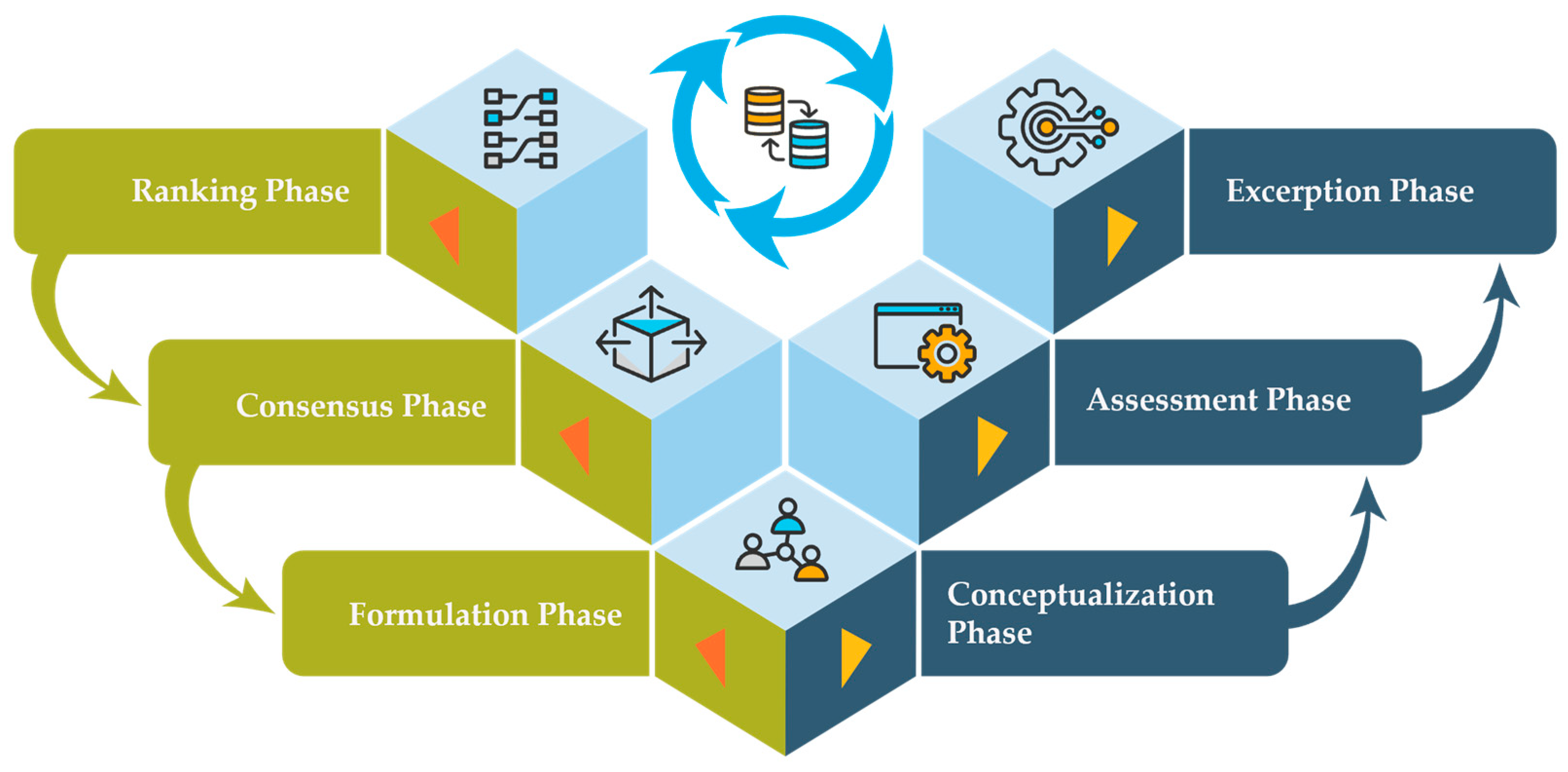

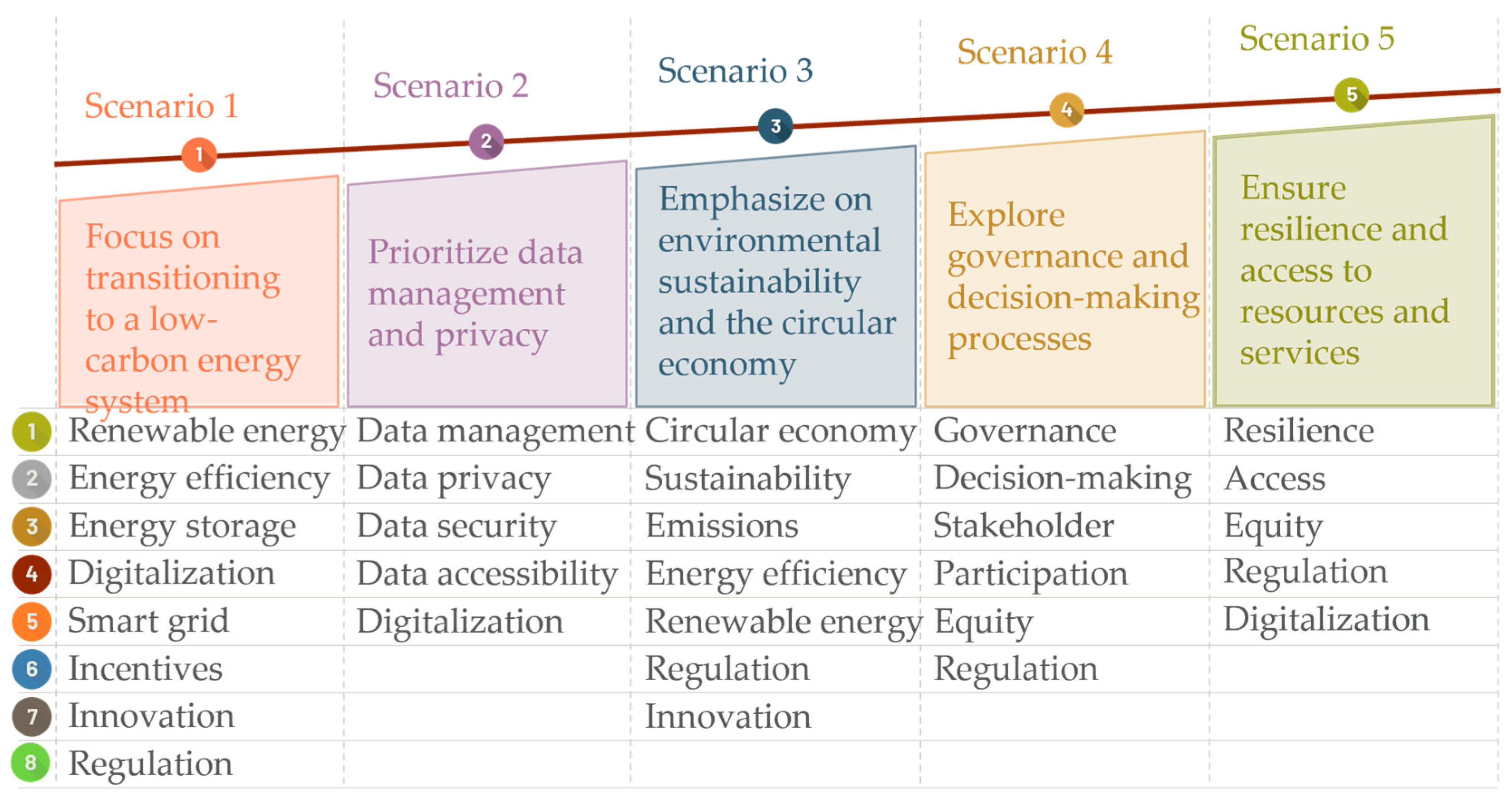
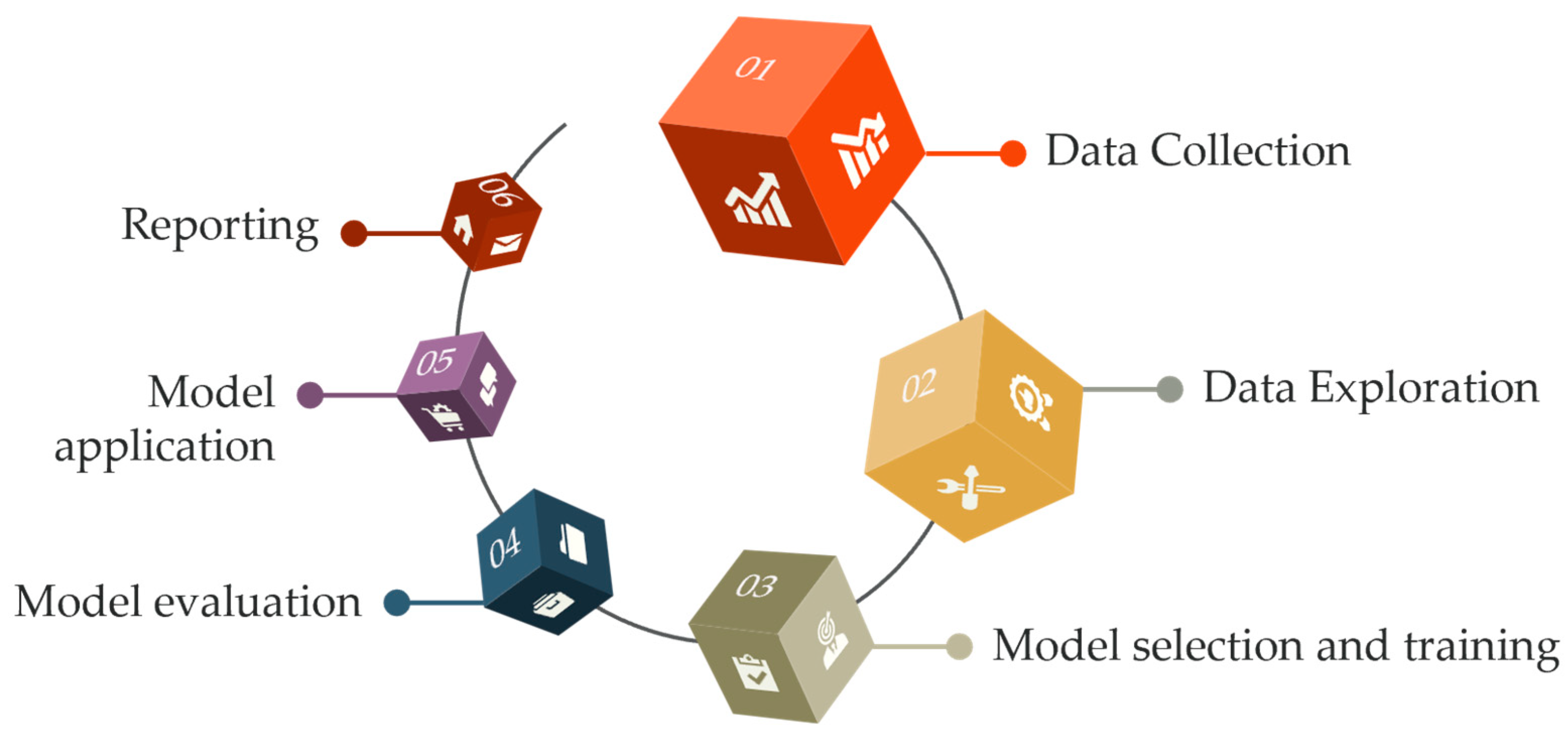


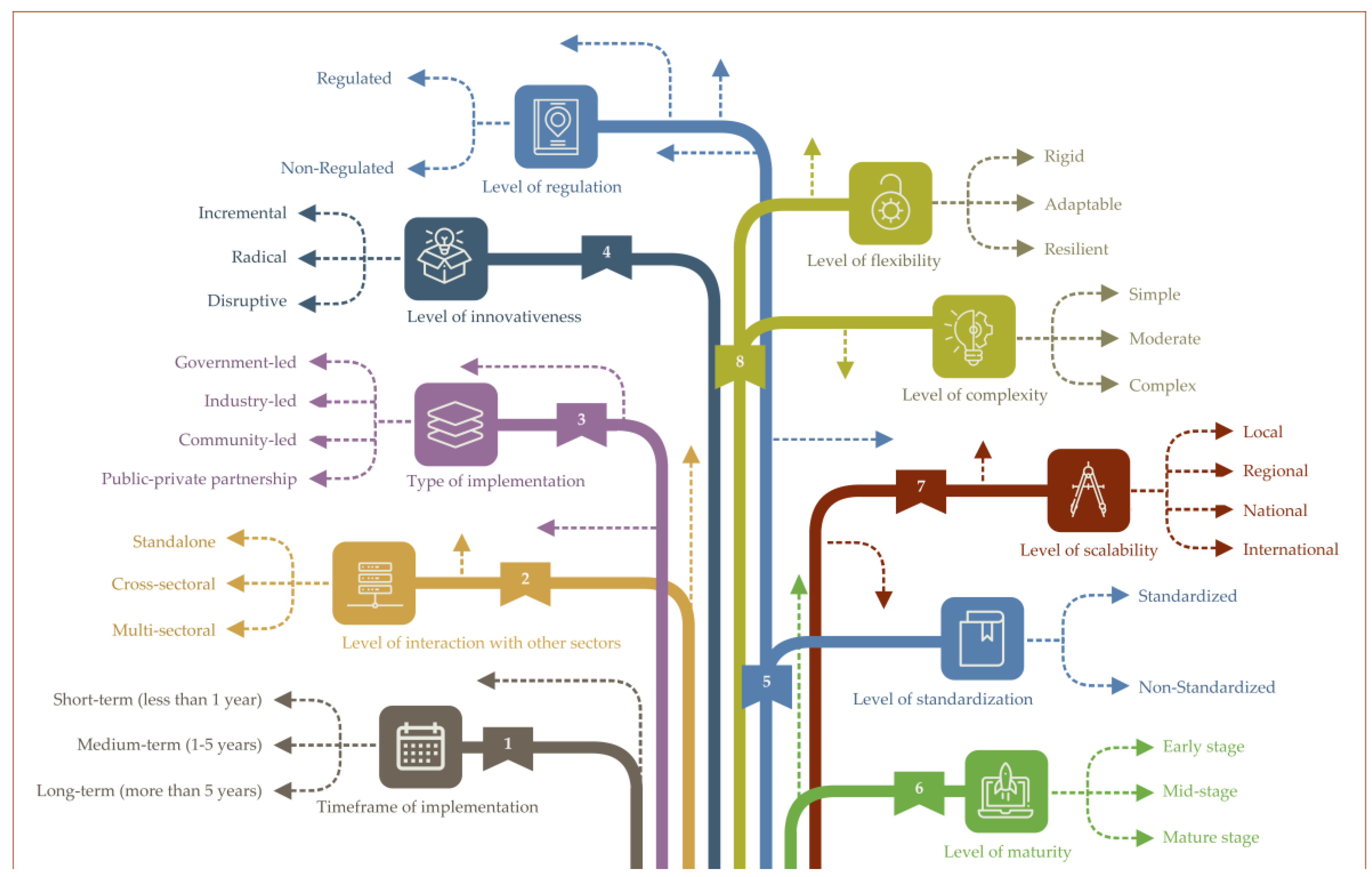
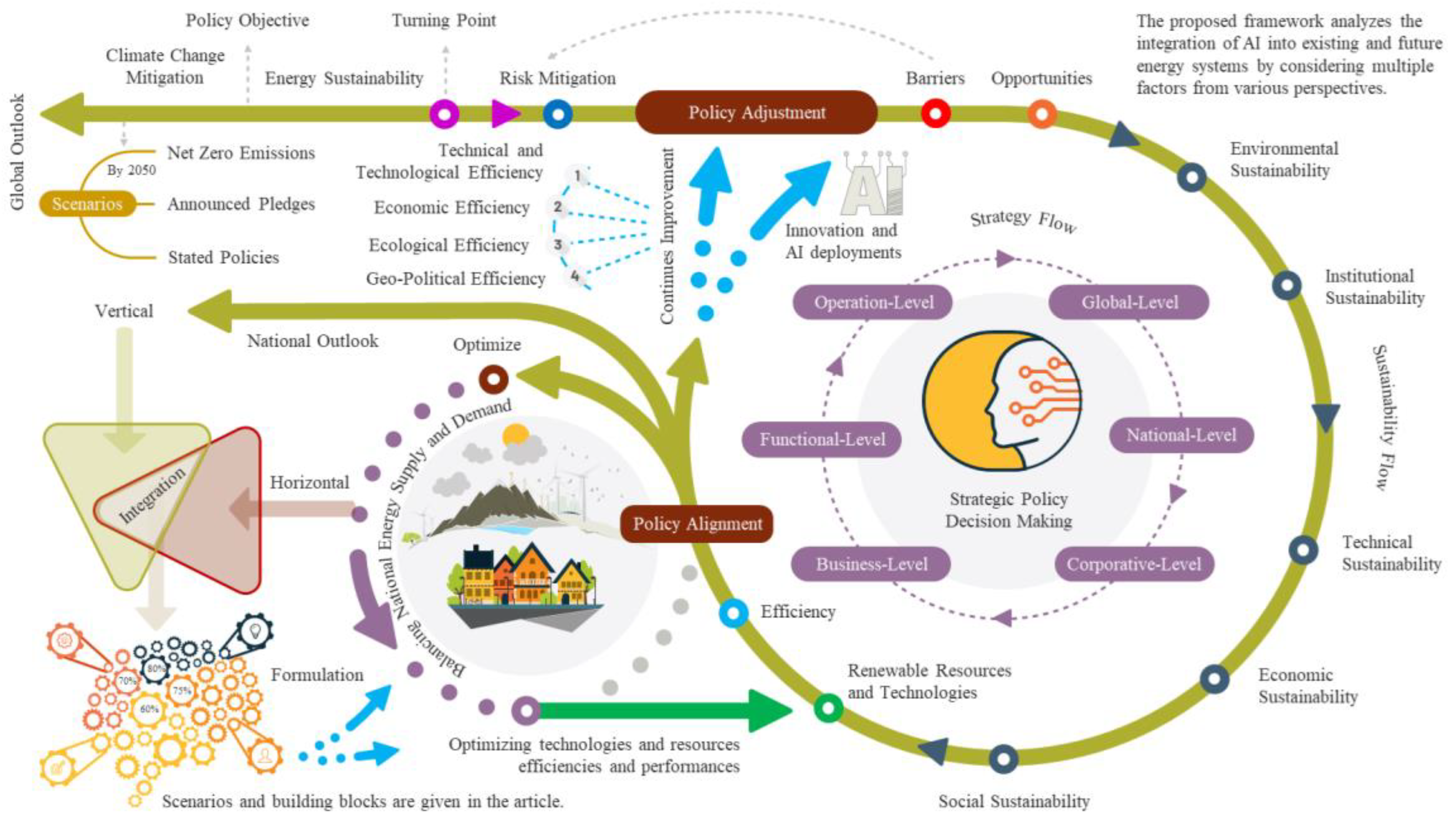
Disclaimer/Publisher’s Note: The statements, opinions and data contained in all publications are solely those of the individual author(s) and contributor(s) and not of MDPI and/or the editor(s). MDPI and/or the editor(s) disclaim responsibility for any injury to people or property resulting from any ideas, methods, instructions or products referred to in the content. |
© 2023 by the authors. Licensee MDPI, Basel, Switzerland. This article is an open access article distributed under the terms and conditions of the Creative Commons Attribution (CC BY) license (https://creativecommons.org/licenses/by/4.0/).
Share and Cite
Danish, M.S.S.; Senjyu, T. AI-Enabled Energy Policy for a Sustainable Future. Sustainability 2023, 15, 7643. https://doi.org/10.3390/su15097643
Danish MSS, Senjyu T. AI-Enabled Energy Policy for a Sustainable Future. Sustainability. 2023; 15(9):7643. https://doi.org/10.3390/su15097643
Chicago/Turabian StyleDanish, Mir Sayed Shah, and Tomonobu Senjyu. 2023. "AI-Enabled Energy Policy for a Sustainable Future" Sustainability 15, no. 9: 7643. https://doi.org/10.3390/su15097643
APA StyleDanish, M. S. S., & Senjyu, T. (2023). AI-Enabled Energy Policy for a Sustainable Future. Sustainability, 15(9), 7643. https://doi.org/10.3390/su15097643






